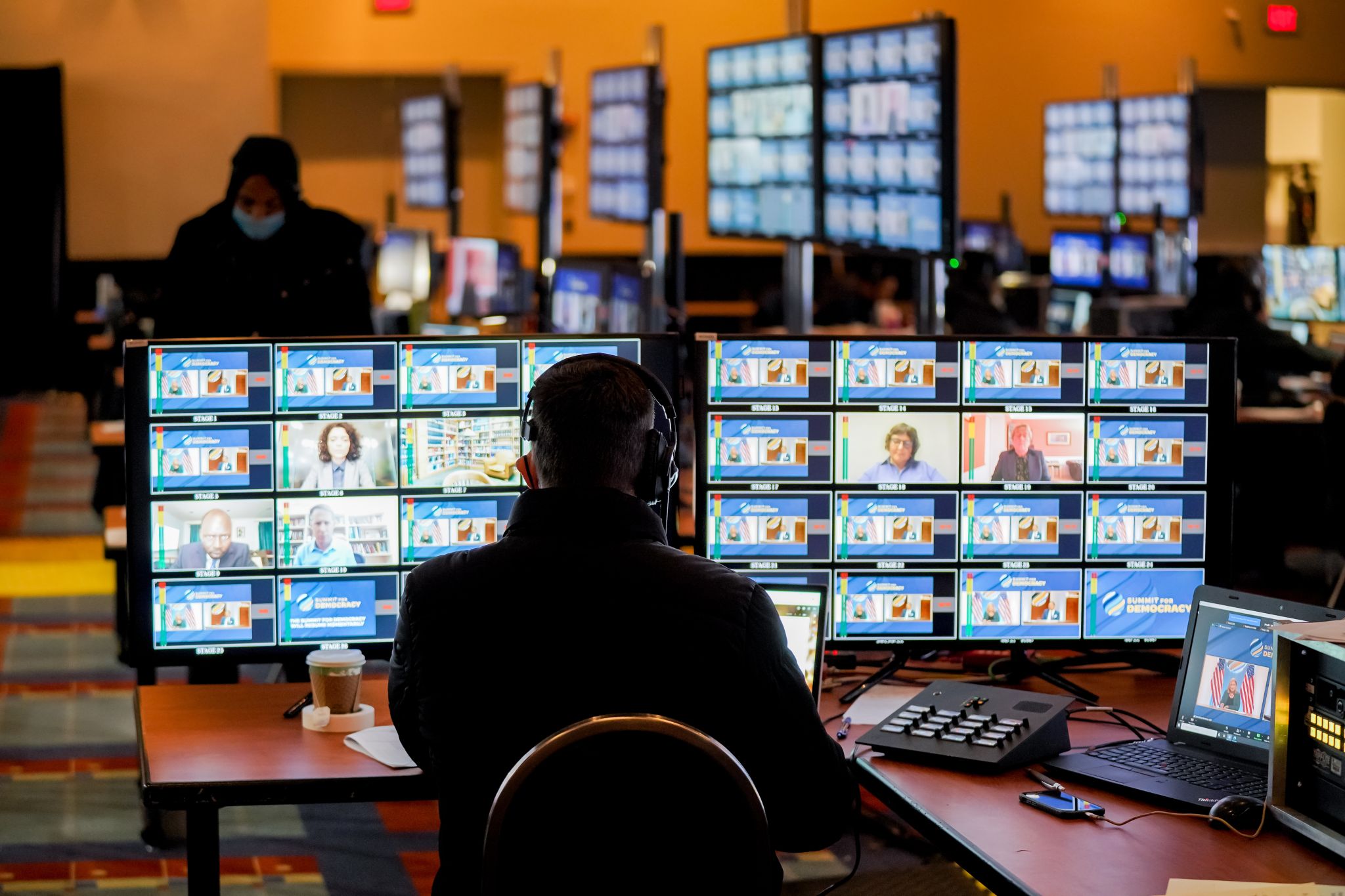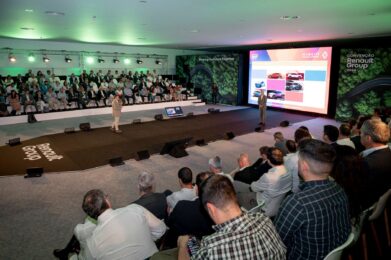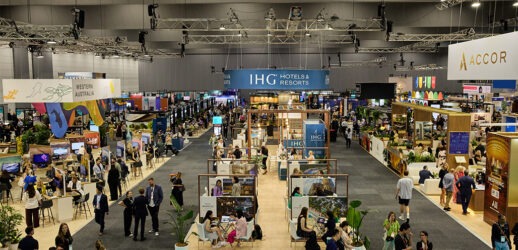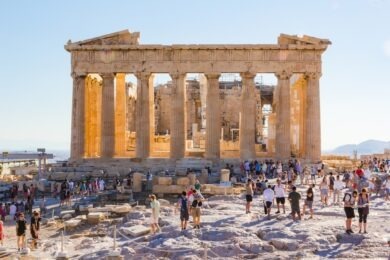The event production company Freeman has worked on some pretty high-profile projects, including Super Bowls and Olympic competitions. But this week, the Dallas-based company led the logistics, design and broadcast production team behind the U.S. Department of State’s global effort to promote better governance at the highest level. President Joe Biden’s Summit for Democracy brought more than 100 heads of state from all over the world together for a two-day virtual experience tasked with accomplishing important goals normally advanced in-person. Foreign Policy Magazine labeled it “the most impressive gathering of potential champions of democracy ever assembled.”
Freeman Senior Vice President of Design Enablement Mike Wohlitz called the experience, “an honor.” He shared: “We were often awe-struck by the significance of the historical moment we were producing.” President Joe Biden’s goals included defending against authoritarianism, addressing and fighting corruption and advancing respect for human rights.
That is a tall order that required a lot of thoughtful solutions. Wohlitz explained the strategy and logistics behind the end-result, including some creative production steps that could be scaled to smaller, less history-making programs.
Read More: Backstage tips from a global automation event.
Setting the Stage
International consortiums are complex affairs. The team was tasked with creating easy accessibility and broadcasting public portions of the gathering while facilitating closed-door conversations that were secure.
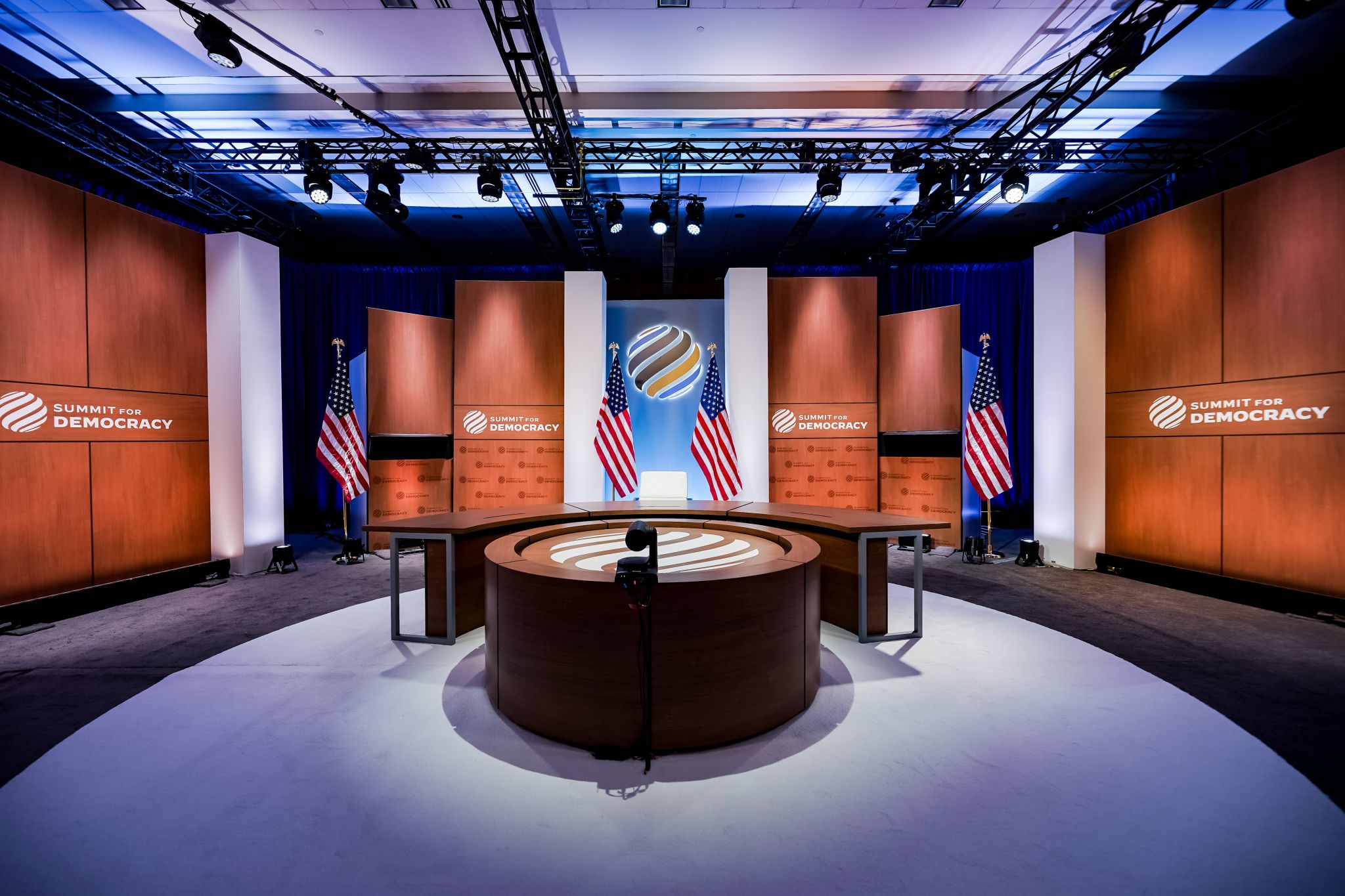
A sound studio that resembled a distinguished news desk at Walter E. Washington Convention Center in Washington, D.C., alternated with sessions broadcast from South Court Auditorium at The White House and two other off-side studios. Other attendees Zoomed in from one of 22 time zones.
“The summit required a comfortable environment that felt like everyone was in the same room,” said Wohlitz. “We didn’t want a Zoom screen with 49 thumbnail faces.”
Zoom was the connection, but attendees were brought in through Freeman’s broadcast platform so if a cabinet member was having a conversation with six panelists, it felt intimate and the rest of the audience could still audit the conversation. The proceedings were livestreamed on state.gov. An intermediary layer allowed for direct conversations.
Read More: Tips for driving attendee engagement at virtual events.
Preparation played a leading role in the production. Penetration studies ensured private sessions were protected. “Security was a priority,” Wohlitz emphasized.
Tech checks started a week before the event and some leaders from places where democracy and broadband are still developing were coached “so their head of state looked as stately as all the others.”
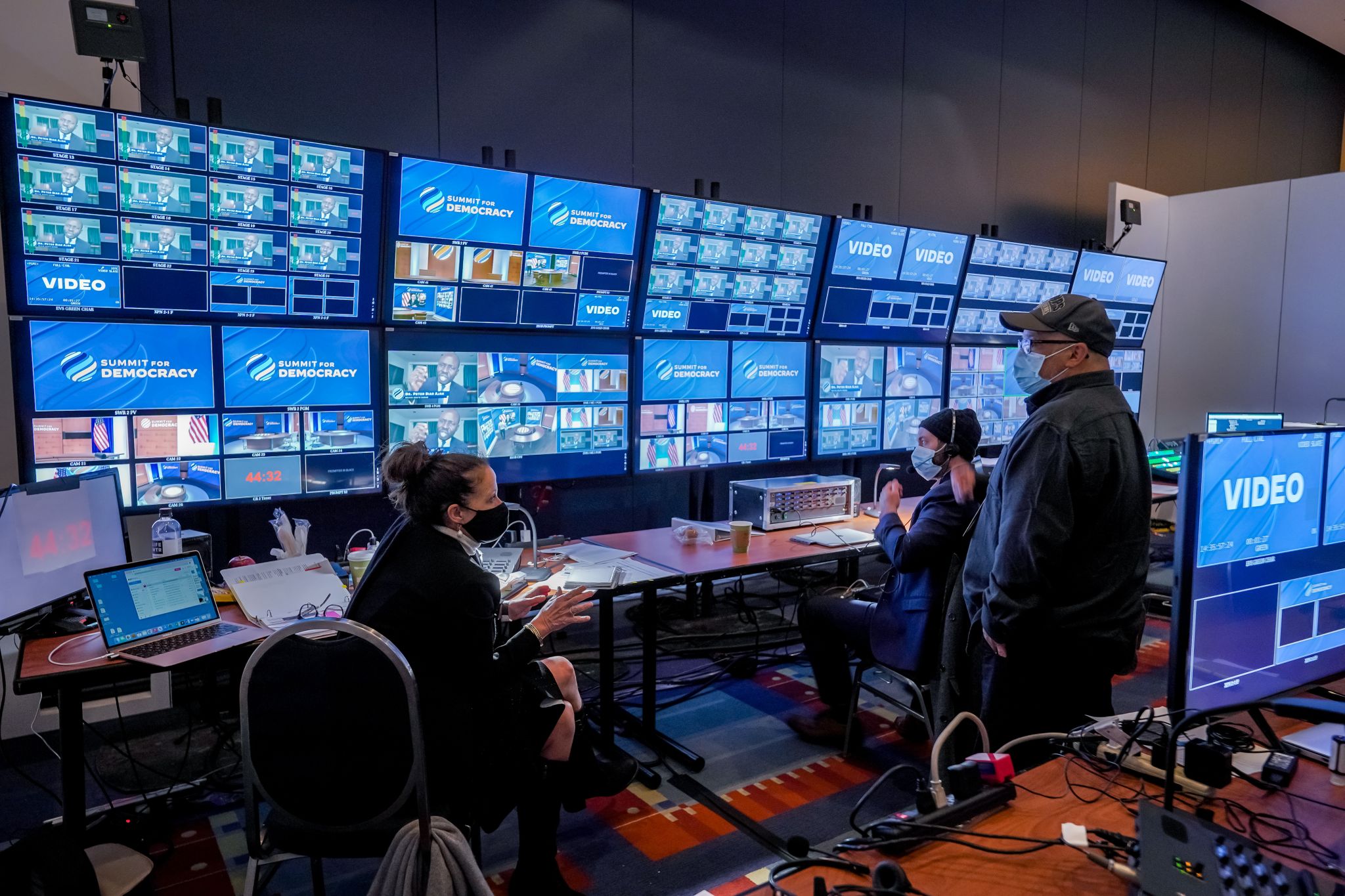
About 250 people worked on the tech side along with hundreds of government officials to orchestrate the action behind the scenes. Separate teams managed each session from separate rooms to keep the broadcast flowing back-to-back with one video feed picking up when the other stopped and no time out to set up the next panel.
In order to ensure that everyone was being heard and understood, comments were translated into six United Nations languages plus Portuguese and American sign language according to International protocol by a team of 60 translators provided by the Secretary of State’s office. “We considered using technology to do the translation, but diplomatic protocol made that less attractive of a choice,” Wohlitz said.
At Freeman, we’re redefining LIVE for the new era of events. The Summit for Democracy was an incredible opportunity for our team and great showcase of our full range of expertise. Couldn’t be prouder of this team! https://t.co/Cw5XW5FslZ pic.twitter.com/tuvP2OB2oE
— Robert Priest-Heck (@bpriestheck) December 14, 2021
Conclusion
The Biden administration committed to producing another summit next December after “a year of action.” Each country left a testimonial video about what they committed to work on in next 12 months. “This is not checking a box and moving on; it will be a continuing process,” said Wohlitz.
It will also be an active year for the Freeman team. “Virtual offerings are not going to go away,” Wohlitz said. Neither are live events, he clarified. “We have proof of what we suspected all along, virtual programs extend the audience.” He pointed out that shows that might have had a live audience of 5,000 in the past draw a virtual audience of 15,000.
Read More: 3 tips for successful virtual events.
“This is an art form that allows us to scale the message,” he beamed. “How you deliver the message is going to be very different depending on whether the action is rebroadcast on a massive screen for those in the back of the in-person ballroom or watching from a 15-inch laptop in their kitchen.”
The Summit for Democracy took its cues from news broadcasts with different camera shots so there is always something intriguing for a public audience or summit attendees. That is a strategy that can work for events of all sizes.
